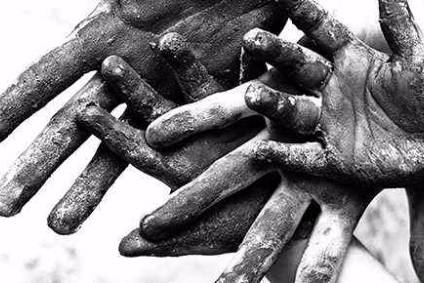
The US apparel and footwear industry has questioned the US Department of Labor over the methods of compiling its bi-annual list of goods produced using child or forced labour.
The ‘List of Goods Produced by Child Labor or Forced Labor’ or TVPRA list, mandated by the Trafficking Victims Protection Reauthorization Act 2005, is released by the Department’s Bureau of International Labor Affairs every two years. Now in its seventh edition and last published in 2016, it identifies 139 goods from 75 countries that the department has reason to believe are made by child labour or forced labour.
In an open letter to Alexa Gunter at the US Department of Labor (DOL), the American Apparel & Footwear Association (AAFA) acknowledged the DOL’s continued efforts to identify and combat global child and forced labour. It also applauded the goals behind the creation of the TVPRA list – but highlighted “deep concern” over the procedural guidelines promulgated by the Department for the development and maintenance of the list.
AAFA CEO Rick Helfenbein believes the credibility of the list could be much improved by a number of revisions to the procedural guidelines.
Firstly, he points to the DOL’s 2010 revisions to the guidelines where it elaborates more on the process of how “significant incidences” are considered when determining child labour or forced labour within a country. Helfenbein says there is still a lack of information on what the Department considers to be a valid submission.
“It is discussed that a single submission from one provider will not likely put the country’s whole industry on the list,” he writes. “Instead, the incidence would have to apply to the general production of the good in the country to be put on the list.

US Tariffs are shifting - will you react or anticipate?
Don’t let policy changes catch you off guard. Stay proactive with real-time data and expert analysis.
By GlobalData“These guidelines are confusing as it also states the incidence does not necessarily have to represent the entire industry. Leading one to ask, how significant does the incidence have to be within the country’s industry to be put on the list? Does the case of child labour or forced labour need to be found in the majority (over 50%) of production in the industry?”
Additionally, Helfenbein says the time period of seven years for evidence to be accepted is “far too long,” given that increasing technology and global connections mean manufacturers are able to access more information and capabilities to improve practices faster.
As a second point, he calls on the DOL to define what a “product” means on the proposed list. “Should the list utilise broad categories to define ‘product’ such as ‘textiles’ or provide as much specificity as possible?
“Since the Department uses broad categories, like ‘textiles’ the list would then imply that any textile or textile product – from yarn, fabric and clothes to furniture and automotive upholstery, sheets and towels – from that country likely utilises child labour, even if no such evidence exists.”
And finally, Helfenbein says some public acknowledgement should be included in the list to recognise countries that are making efforts in improvement in the practices of the industry to address violations of child or forced labour.
Garments made in Jordan were removed from the latest list published in October 2016. Yet Helfenbein says the Department has done nothing to acknowledge the “tremendous progress” Jordan had made in the intervening years, giving the “unfair and incorrect impression” during that period that Jordan’s garment industry was rampant with forced labour.
“We fully support the Department’s goal of eradicating child and forced labour worldwide, and the strong partnerships it has engendered with our industry, and many others, in this fight,” Helfenbein concludes. “We believe the adoption and implementation of these recommendations will help the Department achieve this goal by significantly improving one of the main weapons in the Department’s arsenal.”



